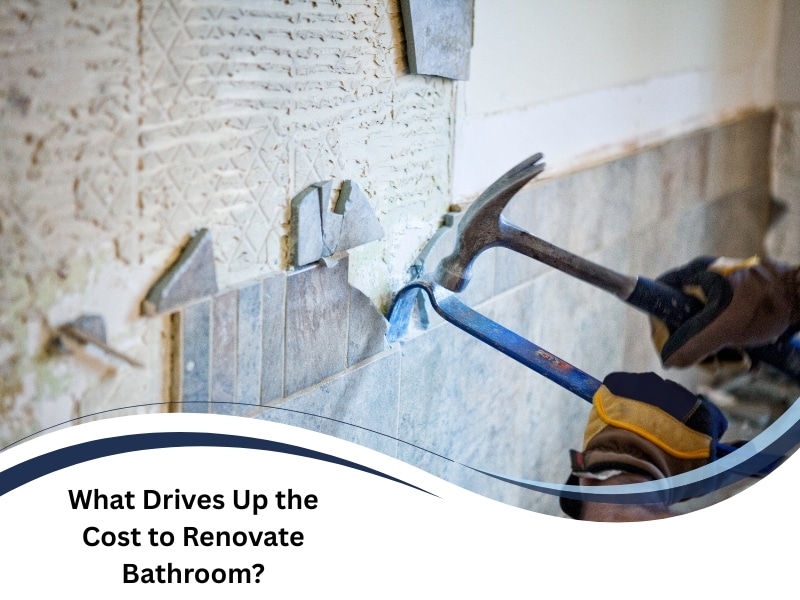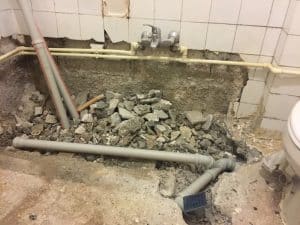Bathroom renovations can be a real mixed bag — they can go off without a hitch, or spiral into a money pit. Whether you’re aiming for a simple update or a luxurious transformation, understanding what drives costs can save you significant money. The cost to renovate bathroom spaces varies widely depending on your choices, planning, and any unexpected snags. This article breaks down the key factors that impact your renovation budget and guides you on how to manage them effectively.
How do material choices impact the cost to renovate a bathroom?
Choosing materials is often where homeowners either save smartly or blow the budget without realising. It’s tempting to pick top-shelf tiles or custom cabinetry, but every upgrade adds up. Small changes in finishes or fixtures can affect not only the cost to renovate a bathroom but also longevity and maintenance. Some important considerations include:
- Premium materials like marble or brass often carry a higher installation cost as well
- Cheap materials might require early replacement, increasing long-term expenses
- Locally sourced products usually cost less than imported ones
- Custom-built options are more expensive than off-the-shelf selections
Quality isn’t always costly, but smart spending counts. Focus on daily-use surfaces—like floors, benchtops, and showers—and avoid overspending on decor. Tile layout and vanity size impact cost and flow.
Choosing quality waterproofing and ventilation maximises value. Tile type, fixture brands, and cabinetry significantly impact renovation costs. Material choices also influence project duration and labour expenses, affecting your overall budget. When selecting materials that impact moisture control, it’s worth understanding waterproofing standards for bathroom renovations, as this knowledge supports both compliance and longevity.
Why does poor planning increase renovation costs?
You wouldn’t set off on a road trip without a map—so why start a renovation without a solid plan? Poor planning leads to expensive last-minute changes, delays, and rework. It’s one of the most common pitfalls that drags a renovation over budget. Lack of a detailed design can lead to:
- Unnecessary demolitions due to late design changes
- Rushed decisions that result in poor purchases
- Delays from trades having to backtrack or rework areas
- Unexpected compliance issues that could’ve been foreseen
Detailed floor plans and itemised material lists help save time and costs in small renovations. Planning involves ensuring bathroom access to avoid delays or the need for expensive temporary setups during construction.
For example, not accounting for plumbing relocation early on can mean breaking newly tiled floors to move a drain. Having a solid plan helps keep things moving efficiently and minimises surprises. You’ll avoid falling into traps like the mistakes that impact your bathroom renovation budget, which often start with vague or incomplete project scopes.
What hidden expenses raise the cost of renovating a bathroom?
Even if you plan well and stick to a basic design, hidden costs have a knack for showing up uninvited. These aren’t necessarily mistakes—they’re just things that many forget to budget for. You might run into:
- Structural repairs uncovered during demolition
- Water damage behind walls or under tiles
- Upgrading old plumbing or electrical systems to meet code
- Waste disposal and permit application fees
Many older homes hide surprises that only emerge once walls and floors are opened up. If your plumbing system is outdated or your wiring doesn’t meet code, updates become mandatory. These aren’t flashy upgrades, but they’re critical, and they can significantly increase the overall cost to renovate a bathroom
One common issue in older homes is the discovery of mould or rotten flooring once tiles come off. Preventative design choices, such as preventing moisture damage through proper waterproofing, help you sidestep expensive repairs down the track. It’s worth having a contingency fund—around 10-15% of your budget—for these types of setbacks.
Which upgrades provide value without raising your budget?
There’s no need to splurge on every feature to create a luxe look. Smart upgrades can boost functionality and style without breaking the bank. It’s all about choosing enhancements that pack a punch without draining your wallet. Here’s what you might consider:
- Wall-mounted vanities make the room feel larger
- LED mirrors for added light and modern design
- Regrouting instead of retilling can save you thousands
- Swapping out tapware is a quick way to elevate style
Even replacing your toilet with a more efficient model can help reduce water usage and lower your bills over time. If budget is tight, focus on visual centrepieces like a modern vanity or sleek new shower screen. These elements make a significant impact without requiring structural changes or heavy labour. Example Cost Comparison Table:
Upgrade Option | Relative Cost | Long-Term Value |
Regrouting | Low | Moderate |
New tapware | Low | High |
Custom cabinetry | High | High |
Frameless shower screen | Moderate | Moderate |
What are some ways to lower your renovation costs effectively?
The good news? Cutting bathroom renovation costs doesn’t always mean sacrificing quality. There are clever strategies to stretch your budget further while still getting the style and functionality you want. Here are a few savvy tactics:
- Reuse the existing plumbing layout to avoid major trades work
- Shop end-of-line or clearance items for fixtures
- Hire licensed professionals with solid references to avoid costly rework
- Schedule your renovation during quieter seasons to negotiate better rates
Cost-saving doesn’t mean cutting corners—it means making informed decisions. Opt for durable, mid-range fittings over cheap, short-lived alternatives. When planning your scope of work, it’s often wiser to discover ways to manage the cost of renovating a bathroom effectively through solid planning rather than making reactive changes.
Is it better to renovate your bathroom all at once or in phases?
This is the classic “one big hit or bite-sized bits” debate. Renovating in phases may seem easier on the wallet, but it often leads to inefficiencies. However, there are cases where it makes sense to stage the work.
Pros of doing it all at once:
- More cohesive design outcome
- Trades can work in logical sequence, reducing setup time
- Often cheaper overall due to bundled services
Pros of phasing:
- Easier to fund gradually
- Less disruption if you only have one bathroom
- More flexibility to adapt the plan if issues arise
In most cases, tackling it all at once results in a more polished finish and lower long-term costs. However, if your budget or household needs don’t allow it, a phased renovation is still a viable option. Just make sure you’re working from a master plan and not winging it week to week.
Final thoughts
Knowing what influences renovation costs helps you stay in control and avoid unwanted surprises. Every choice—from fixtures to timelines—can impact your final budget. If you’re weighing up your options or need a bit of guidance before taking the plunge, it’s worth having a chat with someone who understands the process. You can always connect with the team at Impress Bathrooms for your renovation needs to explore what might work best for your space.


